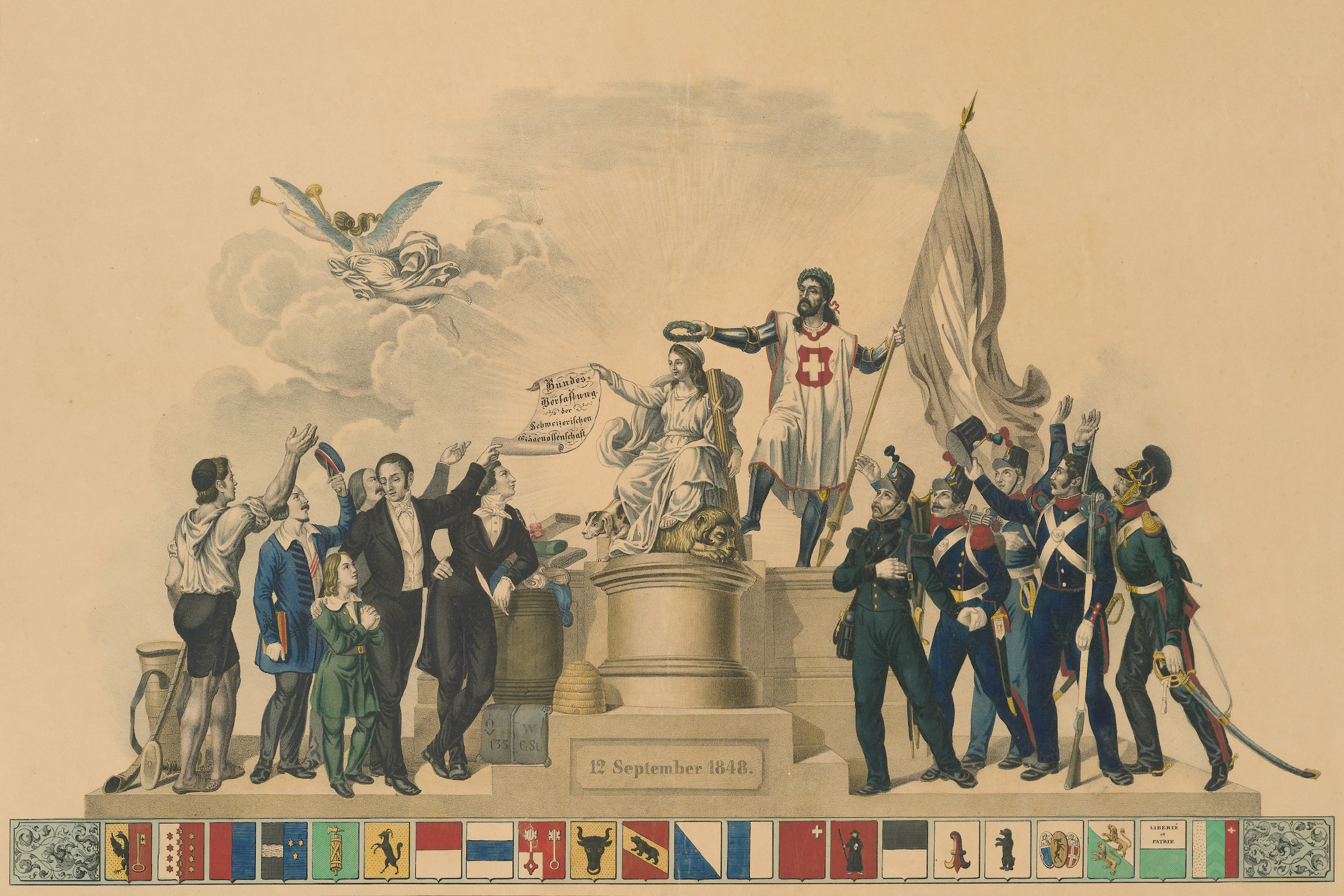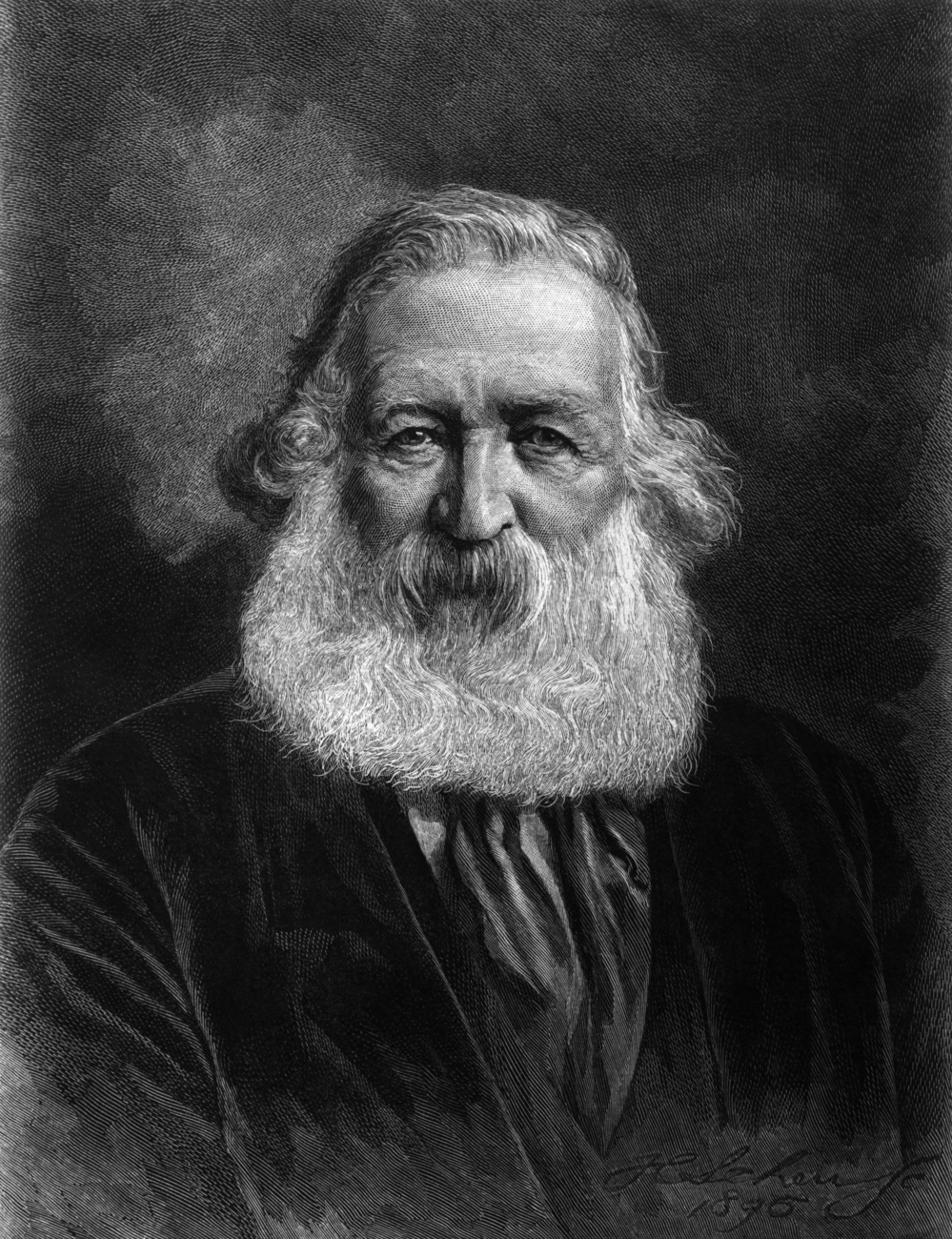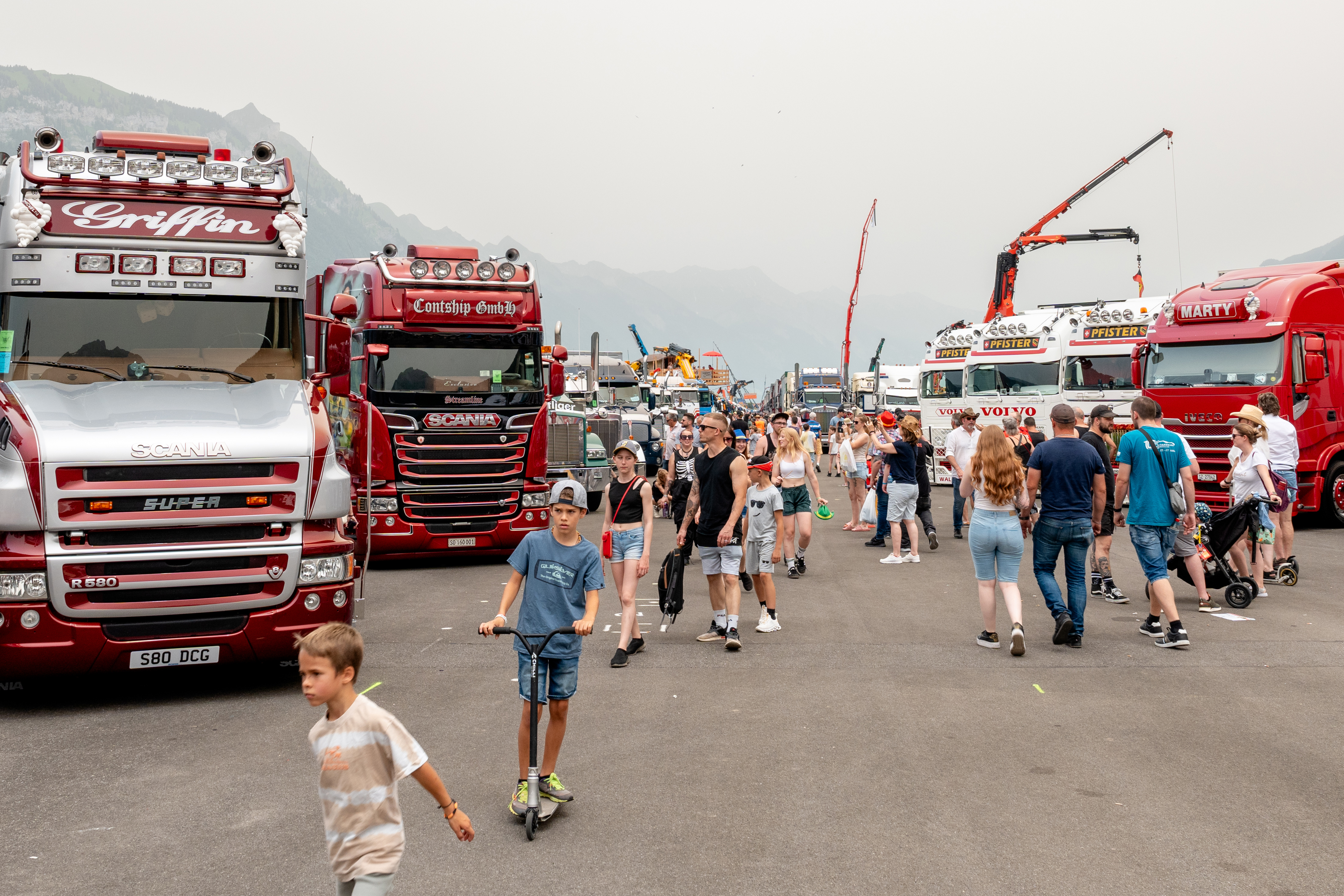How the US and Switzerland became direct democracy ‘sister republics’

Direct democracy tools are present in one form or another in a majority of American states - but they rarely make the headlines. Julien Jaquet, a political scientist, explores the links and differences between popular initiatives and referendums in the United States and Switzerland.
In an interview with SWI swissinfo.ch, Jacquet, who lectures on political science at the University of Geneva, talks about abortion referendums and the impact of gerrymandering and ideological bias on votes.
+ Get the most important news from Switzerland in your inbox
He also discusses a promising approach to deal with an increasingly polarised US Congress, on which three US states will vote on 5 November 2024.
SWI swissinfo.ch: Around 70% of US citizens now live in US states and cities where the process to start popular initiatives is available. So why do direct democracy-style votes in the US rarely make the headlines?
Julien Jaquet: That’s maybe true internationally, but not if you ask a person in California. People there vote at least as often as in Switzerland and the votes are important in the media discourse.
Take abortion rights, for example, since the US Supreme Court overruled the Roe v. Wade ruling. This November, there will be a record of 11 statewide votes on abortion rights in 10 different states. US news outlets do speak about these ballots.

SWI: Are these ballot proposals mainly backed by groups that want to ensure access to abortion or those that want to ban abortion?
J.J.: It’s a mixed bag. But the results of recent votes show a trend: citizens often voted either in favour of retaining abortion rights or against a new restriction, even in conservative states.
This makes sense, because in the US as a whole over 60% of people are in favour of some legal abortion rights, according to recent polls.

More
Women seeking abortion still experience stigma in Switzerland
SWI: So, the votes are working in the Democratic Party’s favour. in 2004, 11 states introduced a ban on marriage for same-sex couples on the same day – a decision that was overturned by the Supreme Court in 2015. Back then, the Republicans used direct democracy effectively.
J.J.: To this day, both parties use direct democracy tools primarily in states where the other side controls the legislature. But in some states that the Republicans dominate, they have been trying to make the use of referendums – respectively initiatives – more difficult for about 10 years.

SWI: Don’t the Democrats do that in the states they dominate when they are angry about voting results?
J.J.: In California, the Democrats are irritated about the so-called recalls. A recall allows a group to bring about a vote to vote out someone with political power, such as a governor, before the end of their term. The Republicans use recalls quite frequently in California.
SWI: In one of the case
studies in your dissertation, you found that conservatives in liberal states,
in particular, rely on direct democracy instruments when they feel
unrepresented.
J.J.: In fact, this result may also be related to the fact that there are many votes in liberal California. That might help explain the particular result that conservative citizens who are underrepresented often opt for referendums. It is also worth mentioning that some additional analyses do not confirm such a result.
However, what’s more interesting is that there are more popular initiatives when citizens feel underrepresented in two ways. In addition to electoral distortion typically due to gerrymandering [constituency boundaries drawn according to the interests of the dominant political force], if there is a particularly large ideological divide between representatives and citizens, more initiatives are launched.
This shows that direct democratic rights are a way for citizens who are not properly represented to tackle the representation gap.

More
Trump, Biden and hatred: how US polarisation affects Americans in Switzerland
SWI: Direct democratic rights are suspected by some people of helping populist forces to achieve their goals. Is that true?
J.J.: Direct democratic rights can sometimes lead to the majority depriving minorities of some their rights.
SWI: The US has become extremely polarised. Could nationwide referendums help prevent this trend?
J.J.: Possibly. The ability to influence policies in more ways than just electing representatives might be perceived as fairer. According to a Swiss study by Lucas Leemann and Isabelle Stadelmann-Steffen, in the US states and Swiss cantons with more direct democratic instruments, the gap in satisfaction is lower between those who win elections and those who lose. But there is another problem with representation.
SWI: What is that?
J.J.: In many districts, only 10-12% of voters actually decide who sits in Congress.
SWI: How is that possible?
J.J.: About 90% of the districts in the US Congress are considered non-competitive. In these districts, the (closed) primary of the dominant party often decides who gets elected – so only registered Democrats or Republicans. These 10-12% primary voters are known to be somewhat more radical in their political stances.
Politicians who are known for compromising with the other party can fail to do so. This discourages politicians from negotiating across party lines for fear of being knocked out of the race in the all-important primary. If you look at Congress over the course of the 20th century, you can see the trend of less bipartisan cooperation. The recently published book The Politics Industry calls for open primaries with candidates from any party, including independents, and the use of ranked choice voting.

More
Our democracy newsletter
SWI: Could you explain what you mean by Ranked Choice?
J.J.: With ranked choice, for example, the top four candidates are determined in an open primary, and voters can then vote for their preferred candidates in ranked order in the general election. This makes it less attractive to campaign by attacking opponents personally, because there are several of them and you have to appeal not only to your own political base, but to the whole population. This could be an interesting way out of the partisan divide.
SWI: Does this idea have a chance?
J.J.: Already, Alaska, Hawaii and Maine vote by ranked choice. Nevada and two other states are voting this November on the introduction of a ranked choice voting system. So direct democracy will then decide again.

More
Sister republics: what the US and Switzerland have in common
SWI: For a long time, the US and Switzerland were regarded as sister republics. From today’s perspective, it seems strange to compare this small Alpine country with the large United
States.
J.J.: It may seem strange nowadays. But if we go back to the time when these states were created, it looks different. In the 18th century, the authors of the US Constitution were looking for models for the design of a newly emerging state. They were naturally inspired by authors from the period of Enlightenment, including the Swiss writers Jean-Jacques Burlamaqui and Emer de Vattel, and also showed an interest in the old Swiss Confederation.
The Swiss who had emigrated and the founding fathers who had travelled to Europe also helped encourage a lively exchange. Until the First World War, Switzerland and the US could probably be regarded as sister republics.
SWI: Nevertheless, your dissertation, which examines democracy in both countries today, has the title
“Sister Republics of Direct Democracy”. Does this title have a factual basis?
J.J.: In terms of direct democracy, yes.Switzerland and the US are not the only countries that have instruments of direct democracy, but they are among the countries in which these instruments are used the most often. In addition, the development of direct democracy in the US took inspiration from Swiss direct democracy.
However, in the US, the idea of direct democracy is older than the founding of the state. In New England, there had been a type of citizens’ assembly comparable to the Landsgemeinde since the 17th century. At the turn of the 20th century, the idea that representative democracy has its limits grew in strength and citizens sometimes no longer felt properly represented by their elected representatives.
Particularly in western parts of the US, where all states now have direct democratic instruments, many representatives in the legislature were perceived as puppets of strong economic interests during the progressive era. Around 1900, these states and their institutions were still young. The progressive reform movement therefore pushed to introduce mechanisms of direct democracy to bypass the legislature if needed. That is when the representation gap between citizens and representatives becomes too large.

More
Five events that shaped contemporary Swiss-American relations
SWI: Is it correct to say that you can override parliament via referendums?
J.J.: A general idea behind my dissertation is how mechanisms of direct democracy and representative democracy complement each other. Some political commentators sometimes tend to portray the two as opposites: either elected representatives acting on behalf of citizens or a direct democracy that puts power in the hands of citizens.
However, the actors and mechanisms of direct and representative democracy are intertwined. In Switzerland, for example, the government and the parliament usually take sides on a popular initiative and may respond to it with a counterproposal. The instruments of direct democracy are a supplement to representative democracy, not a substitute for it.

More
How centuries of Swiss emigrants left their mark on the US
SWI: How did you first come across the idea that Switzerland and the US are “sister republics”?
J.J.: I actually found the term in James Hutson’s book, which you cite in an earlier article. From Switzerland, a city councillor from Biel was supposedly the first to write about the two sister republics in a letter to Benjamin Franklin in 1778.
During my in-depth research, I also realised how closely the term was linked to the French Revolution, just as the term was coined by the French Revolution from 1789 onwards. France wanted to gather states around itself that were to be sister republics – in other words, not monarchies but government by the people.
Edited by Balz Rigendinger
Julien Jaquet works as an analyst in the strategic department of the Swiss public broadcaster, RTS, which, like SWI swissinfo.ch, is part of the Swiss Broadcasting Corporation (SBC).

More
How America shaped Geneva’s international role

In compliance with the JTI standards
More: SWI swissinfo.ch certified by the Journalism Trust Initiative











You can find an overview of ongoing debates with our journalists here . Please join us!
If you want to start a conversation about a topic raised in this article or want to report factual errors, email us at english@swissinfo.ch.